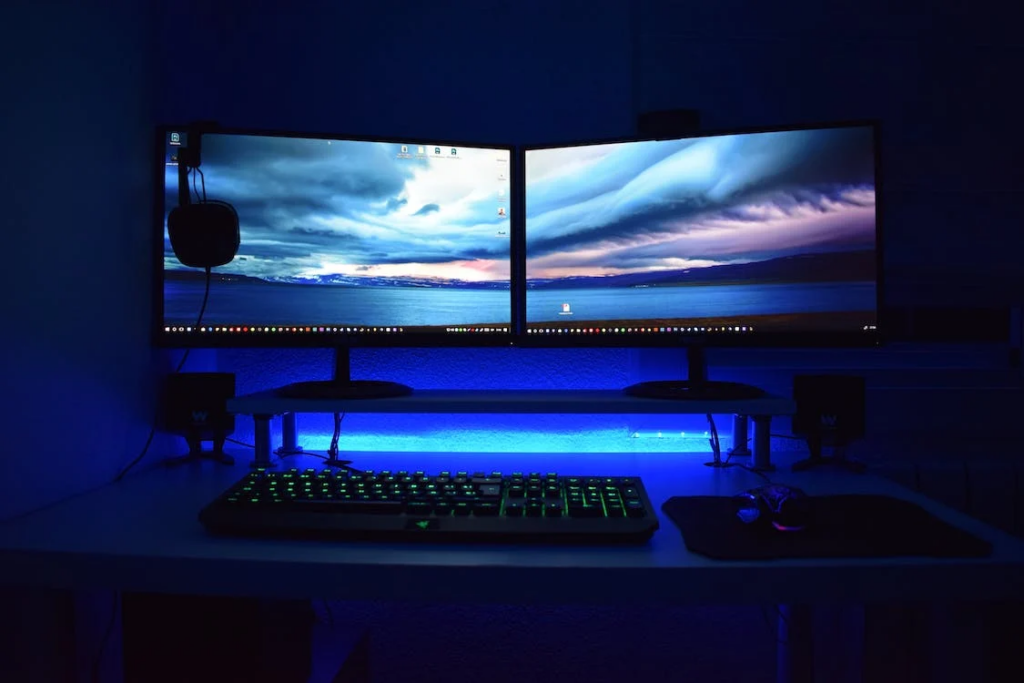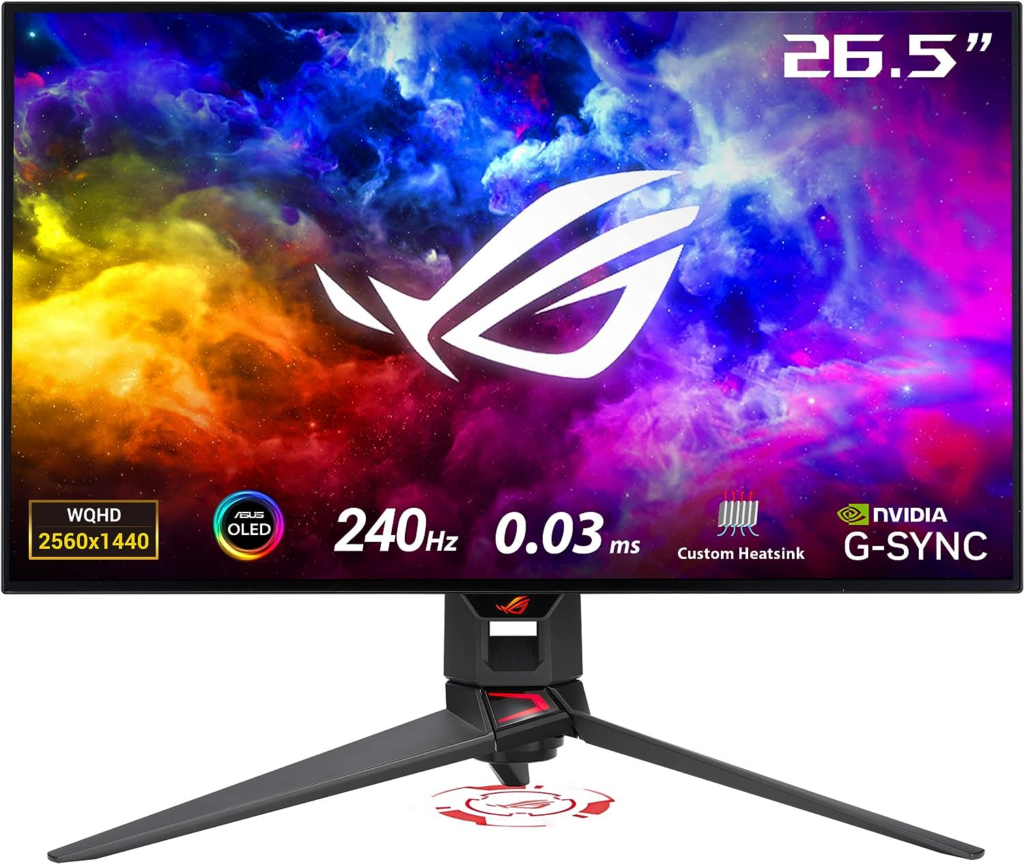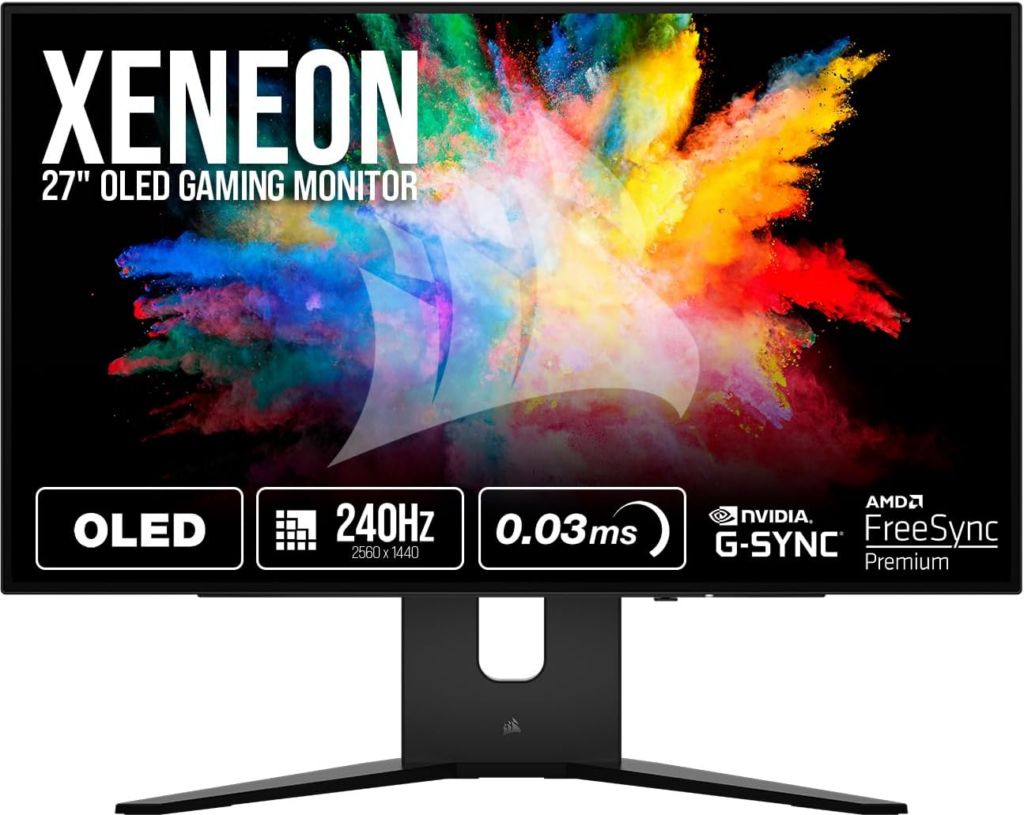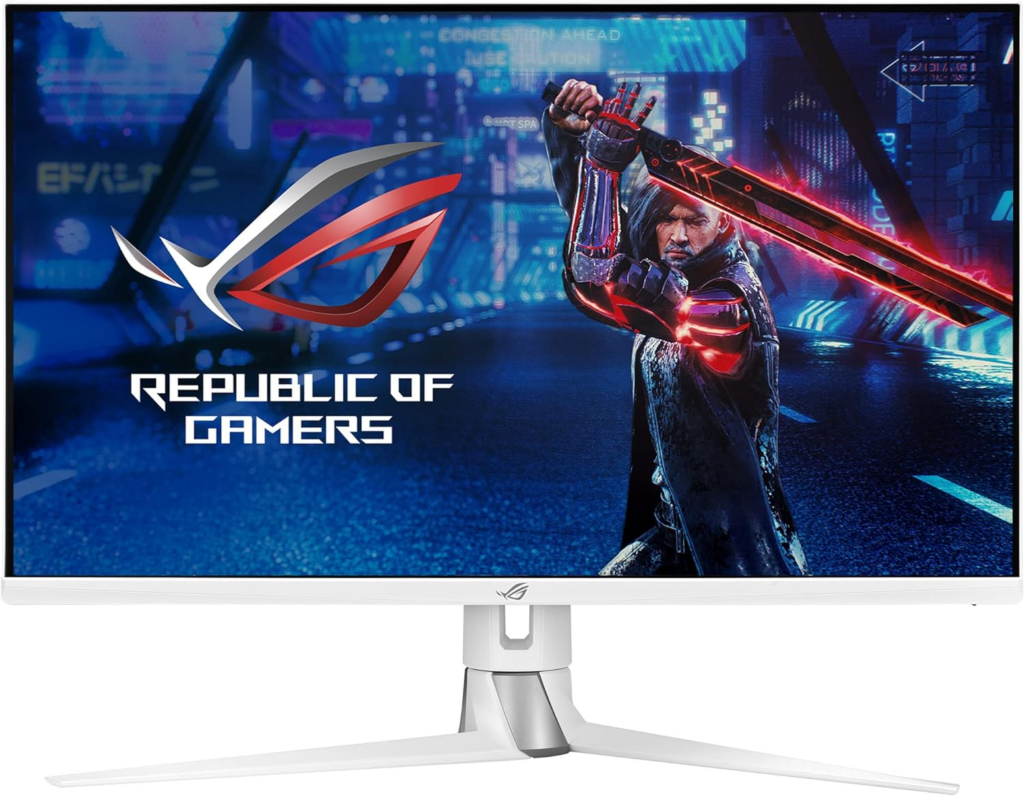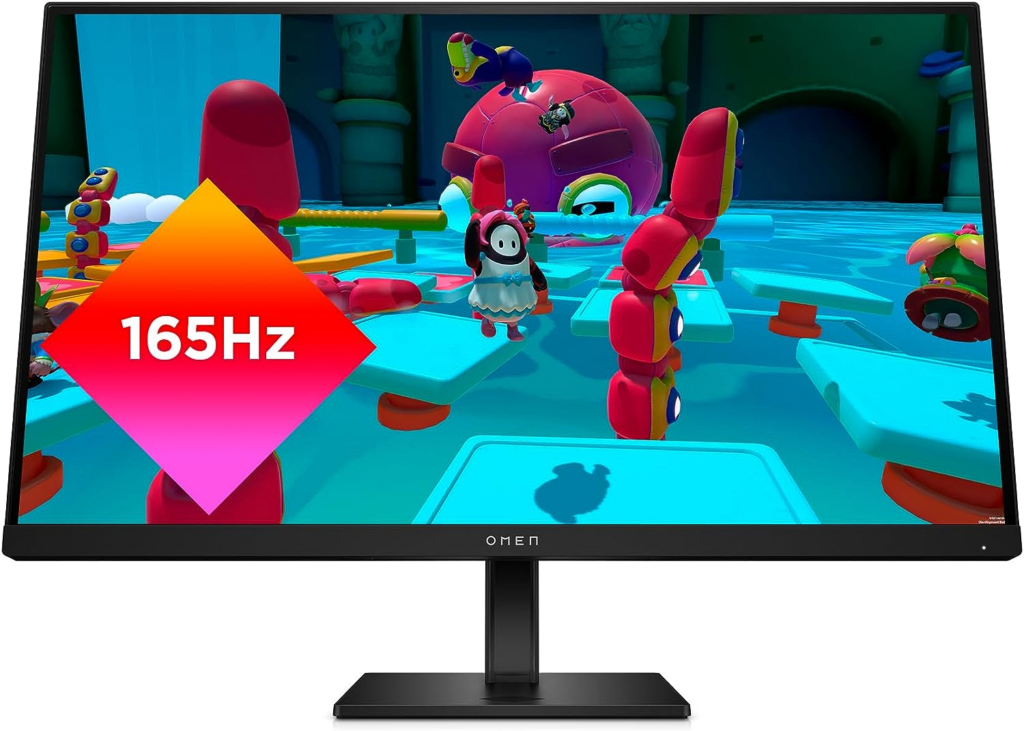If you haven’t bought a gaming monitor in a few years, you’ve missed out on significant advancements that may make your games look fantastic: The most recent 2K gaming monitors boast stunning colors and contrasts that rival your living room TV, superior resolutions that cram more pixels into the display for better graphics, and an outstanding mix of high refresh rates and adaptive sync technology for smooth, constant gameplay. We’ve summarized the best 2K gaming monitors for 2024 in this article and all the insights you can use to make your buying decision.
Important factors to consider when purchasing a 2K gaming monitor
Gaming monitors vary from other screens, such as standard monitors and televisions, in a few ways. Here are some critical topics to consider.
Refresh rate
The refresh rate is what distinguishes a gaming display from a conventional monitor. A faster refresh rate allows you to view all of the frames produced by your graphics card or gaming console, resulting in a smoother image. We recommend staying over 100Hz for PC. Although consoles do not necessarily require more than 60Hz, the Xbox Series X and PlayStation 5 may achieve 120Hz in some titles.
Ports
A gaming monitor’s port selection is critical for several reasons. To begin, several inputs are required so that you may connect to more than one gaming platform. You’ll want access to both if you have a PC and a console, for example. The specification is also crucial. Most consoles require HDMI 2.1, which can produce 4K at 120Hz. Older HDMI versions cannot.
Resolution
You should consider the monitor’s resolution before purchasing it. Higher resolutions place greater strain on your PC’s graphics card; therefore, you should match the resolution to your PC for optimal performance. If you have a budget GPU or an older generation of CPU, you should certainly choose 1080p displays over 4K alternatives when looking for a monitor.
10 Best 2K Gaming Monitors – 2024
MSI G274QPX 27″ 2K Gaming Monitor
It’s difficult to ignore the MSI G274QPX at $330 for high refresh rate customers looking for a 1440p 240Hz monitor, especially considering it’s currently less expensive than when we tested it at $380. It’s a 27-inch 1440p 240Hz IPS LCD with performance comparable to prior cheap monitors with similar specifications, such as the (now more costly) Gigabyte M27Q-X.
It has a high brightness, a very excellent contrast ratio, a flat panel with exceptional viewing angles, and a solid sRGB mode, but its reaction times are just ordinary to usual. There are no serious drawbacks, and we believe it is difficult to pass up at such a low price.
Because of its greater reaction time tuning and calibration, we believe the LG 27GR83Q is a better monitor than the G274QPX. However, it costs roughly $500 in the United States. It’s a good device, but it’s not worth the $170 price increase over the MSI. Similarly, at $400, the M27Q-X’s performance is too comparable to that of the less expensive MSI to warrant our endorsement.
Asus ROG Swift OLED PG27AQDM 27″
If you’re looking for the finest 1440p gaming monitor overall, go no further than the Asus ROG Swift PG27AQDM, a 27-inch 1440p 240Hz OLED display. This device shines in a variety of areas, including motion clarity that outperforms most LCD displays and rivals 360Hz versions.
Even if HDR gaming isn’t your thing, the PG27AQDM’s speed and fast refresh rate make it ideal for competitive multiplayer gaming. It gets much more enticing when you play a range of games, both multiplayer and single-player. This is owing to the OLED display’s exceptional HDR capabilities.
A spectacular HDR gaming experience is enhanced by deep zero-level blacks, per-pixel local dimming, and high brightness levels. However, it has certain limitations, such as poor word clarity and the possibility of irreversible burn-in, which make it unsuitable for productivity activities. However, few items compare to this one for 1440p gaming.
If you’re afraid to pay $1,000 – which is understandable given the size of the commitment – the AOC Agon Pro AG276QZD could be attractive. It has the same OLED display but is less bright and costs $800.
Most definitely it belongs to our list of best OLED gaming monitors to buy in 2024.
Dell S2722DGM
The classic 27-inch Dell S2722DGM combines considerable screen real estate with a native resolution of 2560 x 1440, giving you a fantastic pixel pitch for fine detail. It’s also a good resolution for attaining excellent frame rates without the GPU needs of a 4K monitor at 1440p. It can also produce that resolution at 165Hz, which is impressive.
It has a 2ms GtG reaction time, which is just a little slower than the top IPS panels’ 1ms and 0.5ms ratings, so you’re covered in terms of speed. However, if you’re looking for speed, you may select faster panels. Given the technology’s inherent high contrast, this VA panel has a high contrast ratio.
In terms of image quality, the Dell S2722DGM is a pretty punchy and colorful monitor for a pure SDR screen. The high inherent contrast undoubtedly helps, ensuring that you don’t feel cheated when playing games like Cyberpunk 2077 in SDR mode, which support HDR.
We’d avoid MPRT mode, which reduces the brightness and richness of the display. The ‘Extreme’ setting, which is listed at 2ms, has a smidgeon of overshoot, but it’s only barely noticeable in-game, whilst ‘Super fast’ removes the overshoot but only allows for a little blurring of deeper tones.
There is no USB Type-C connection. However, the twin HDMI and single DisplayPort connections are adequate, even if the HDMI ports only support 144Hz rather than 165Hz.
Most significantly, this Dell monitor is reasonably priced. Dell produces high-quality gaming panels with all of the necessary functions and a few superfluous ones to raise the price. As a result, it is one of the greatest gaming monitors available to most PC gamers today.
Pixio PXC277 Advanced
What are the real necessary components of a good gaming monitor, and how much will they cost you? On paper, the new Pixio PXC277 Advanced may cost as little as $240. It has a 27-inch 1440p display with a 165Hz refresh rate and a stated reaction time of 1ms. Not to mention HDR support. That’s a lot of value for the money.
It also satisfies almost all of our critical KPIs. 1440p on a 27-inch display is still an excellent all-around compromise in terms of size, pixel density, and GPU load. Similarly, 165Hz is plenty for everyone except the most ardent esports fans. In principle, a 1ms reaction is also possible. There is ostensibly HDR support. However, the backlight is, predictably, monolithic. There is no full-array local dimming, and the maximum rated brightness is 320 nits, which is low by today’s standards.
There are no immediate concerns about the visual quality or game experience. Phew. The panel’s default calibration is rather precise, and there are no odd sharpening filters or backlight blotchiness that you often get on extremely cheap screens. Even with the backlight set to maximum, this isn’t the most vibrant display. However, it is quite vivid, and the inherent contrast of the VA panel technology results in acceptable black levels. In SDR mode, the basic desktop experience is rather pleasant.
The panel’s HDR performance, predictably, is less stunning. It will process an HDR stream and provide widely accurate colors. However, it is not even close to a true HDR experience. The HDR calibration also contains some high-end compression, which causes bright features to be blown out. Thankfully, with tiny bezels on three sides, a chin, and a clean metal stand, the PXC277 doesn’t appear like the cheap basement object it could have been. The external power supply, admittedly, dampens the tone. It’s a generic object with a pixio sticker slapped on the side. Furthermore, the aforementioned stand is solely tilt-able.
Corsair Xeneon 27QHD240
Corsair has built a reputation for producing high-quality, sometimes unconventional gaming monitors (we’re looking at you, Xeneon Flex 45WQHD240). Corsair’s Xeneon 27QHD240 still provides OLED deliciousness for enthusiasts, but in a considerably smaller and less expensive design. The Xeneon 27QHD240’s model name includes three of its key specifications.
This 27-inch monitor has a QHD (2560 x 1440) resolution and a refresh rate of 240 Hz. It supports AMD FreeSync and Nvidia G-Sync technology, as one would expect from a premium gaming monitor, and has a reaction time of just 0.03 ms.
Other specifications include a maximum brightness rating of 1,000 nits in HDR mode and 450 nits in SDR mode. Because black levels are an evident advantage of OLED displays, the 1,500,000:1 contrast ratio should come as no surprise.
In our instrumented testing (and just using our eyes), we were delighted with the Xeneon 27QHD240’s overall image quality and contrast. The accuracy of the panel was near-perfect from the factory, which means users won’t need to change settings in the OSD to correct any noticeable defects. Gaming performance was also excellent, and the monitor’s general build quality was excellent, as is typical with Corsair. The Xeneon 27QHD240 is hard to beat for anybody searching for a sub-30-inch OLED gaming monitor for under $900.
Koorui 27E6QC 2K Gaming Monitor
The Koorui 27E6QC is one of the most reasonably priced 1440p 144Hz gaming monitors on the market. It has a curved VA panel for a more immersive gaming experience, however it performs poorly in fast-paced games. The Koorui 27E6QC has a high contrast ratio (3,000:1) and a wide 85% DCI-P3 color gamut, which, along with the curved screen, increases the visual part of the gaming experience significantly.
However, the displays have a slower reaction time, which causes more obvious ghosting and trailing in fast-paced games, particularly in darker situations. Overall, if you’re not interested in competitive gaming and would rather have better visuals, the Koorui 27E6QC is for you.
Don’t worry, unless you’re especially sensitive to ghosting, you’ll still be able to enjoy single-player and casual multiplayer first-person shooters. Moving on, AMD FreeSync is supported with a VRR range of 48-165Hz and works with compatible NVIDIA GPUs. Unfortunately, certain systems exhibit FreeSync brightness flickering. The monitor’s stand is tilt-only, however the screen is VESA mount compatible thanks to the 75x75mm pattern. For increased realism, the screen includes a modest 1800R curvature. HDMI 2.0, HDMI 1.4, DisplayPort 1.2, and a headphone port are among the connectivity choices.
Acer XV271U M3 -2K Monitor For Gaming
The Acer XV271U M3 is one of the most affordable 1440p 165Hz (180Hz factory OC) IPS gaming monitors with a 1ms GtG reaction time, allowing you to play fast-paced games with no ghosting and no VRR brightness flickering. The Acer XV271U M3 provides consistent and vivid colors thanks to its IPS screen with a wide 95% DCI-P3 color gamut coverage.
Other panel-related features include a peak brightness of 250 nits and a static contrast ratio of 1,000:1. For tear-free gameplay at up to 180FPS, the display supports both AMD FreeSync Premium and reliable G-SYNC Compatible performance. Backlight strobing is also supported.
Other features include Black Boost (which increases vision in low-light situations), crosshair overlays, and a variety of image presets. With up to 120mm height adjustment, -5°/25° tilt, 90° pivot, +/- 180° swivel, and 100x100mm VESA mount compatibility, the stand provides comprehensive ergonomic support. Two HDMI 2.0 connections, DisplayPort 1.2, a headphone connector, and twin 2W integrated speakers are among the connectivity choices.
ASUS PG329Q – 2K Gaming Monitor
Do you want a 32-inch 1440p gaming monitor with an IPS display and a fast refresh rate? By far the finest value for money is provided by the ASUS PG329Q! A 32′′ 1440p monitor does not have the same pixel density as a 27′′ model, therefore the image quality is not as sharp (you receive the same PPI as a 24′′ 1080p monitor).
The bigger screen, on the other hand, provides a more immersive watching and gaming experience.
Furthermore, the ASUS PG329Q features 99% Adobe RGB gamut coverage for rich colors (sRGB emulation mode is also available), while the contrast ratio and peak brightness are typical at 1,000:1 and 400-nits (600-nits for HDR). Moving on, the display offers a quick 1ms GtG pixel response time, which eliminates ghosting in fast-paced games. NVIDIA has officially validated AMD FreeSync as G-SYNC Compatible, with a VRR range of 50-175Hz. Other capabilities include Shadow Boost, crosshair overlays, several visual settings, and ELMB-Sync MBR technology, which can function alongside VRR.
The monitor’s stand is strong and somewhat ergonomic, with height adjustment up to 100mm, +/- 25° swivel, -5°/20° tilt, and compatibility with 100x100mm VESA mounts. DisplayPort 1.2, two HDMI 2.0 ports, a headphone jack, and a USB 3.0 hub (1 upstream + 2 downstream) are among the connectivity choices.
All things considered this is one of the best 32-inch monitors you can buy in 2024.
Samsung C27G75T
The Samsung C27G75T and C32G75T are the only widescreen VA-panel gaming monitors with a GtG reaction time of 1ms! The Samsung Odyssey G7 monitors have a high 2,500:1 contrast ratio for deep blacks without IPS glow, as well as a rapid reaction time speed to eliminate ghosting in fast-paced games! They also have a fast 240Hz frame rate, a broad 95% DCI-P3 color gamut, and DisplayHDR 600 certification.
Unlike the previously stated HDR displays, the Samsung G7 monitors genuinely provide a significant boost in HDR image quality. To begin, they offer a superb 2,500:1 native contrast ratio and a wide color gamut, while their standard 350-nit peak brightness is increased to 600-nits for more vivid highlights. Furthermore, there are eight dimming zones that may be used to darken areas of the screen for a better HDR viewing experience.
Of course, with just 8 dimming zones, you won’t get the ‘full’ HDR viewing experience, but the HDR picture is still excellent for the price. The NVIDIA G-SYNC Compatible Samsung Odyssey G7 displays provide smooth VRR performance as long as you have the 1009.3 firmware (or newer) installed. With AMD GPUs, FreeSync Premium Pro provides decreased input latency and higher HDR image quality in compatible games.
The VRR range for the 27′′ model is 60-240Hz and 80-240Hz for the 32′′ variation, while HDMI is restricted to 48-144Hz. The firmware update described above adds a new ‘VRR Control’ option that, when enabled, avoids the brightness flickering commonly associated with VA screens.
However, some users indicate that when VRR Control is engaged, micro-stuttering occurs. It does not appear to effect all units, and its strength varies across various panels, so some users may not detect it at all. So, IPS is still the way to go if you want assured faultless VRR performance, but most gamers will be satisfied with the Odyssey G7. A strong stand with a good range of ergonomics, including up to 120mm height adjustment, 90° pivot, +/- 15° swivel, -9°/13° tilt, and 100x100mm VESA mount compatibility, is included in the design.
The RGB LEDs at the back and front of the display may be customized in the OSD menu. There are two DisplayPort 1.4 ports, a single HDMI 2.0 port with a maximum resolution of 1440p 144Hz, a headphone connection, and a dual-USB 3.0 hub for communication.
Keep in mind that a graphics card that supports DSC (Display Stream Compression) is required for 1440p 240Hz and 10-bit color. AMD’s RX 5xxxx series and NVIDIA’s RTX 20-series and GTX 16-series (or newer) are examples. Older GPUs only support 1440p 240Hz 8-bit color or 1440p 144Hz 10-bit color.
The monitors offer a sharp 1000R screen curvature, which is especially noticeable on the 32′′ model. Some people appreciate the deep curvature, while others dislike it. It’s a personal preference. Also, some people can adjust to it over time, while others cannot.
You may also want to read: Best Monitors With Camera in 2024
HP Omen 27qs – 1440P Gaming Monitor
Would you like a 1440p 240Hz IPS gaming monitor with a flat screen? Consider the HP Omen 27qs, which features a broad color gamut and smooth VRR performance.
The HP Omen 27qs makes use of an IPS panel with 178° viewing angles and accurate colors. It features a color gamut of 95% DCI-P3 (130% sRGB) and a 100% sRGB emulation mode. The HP Omen 27qs display has a lower contrast ratio than the G7, so the blacks aren’t as deep, but the colors are more vibrant and richer. The HDR image is likewise a step down due to the reduced peak brightness of 400 nits and the lack of local dimming.
The key benefit of the HP Omen 27qs over the G7 is the more brilliant and exact color reproduction, broader viewing angles, flawless VRR performance, and the fact that most people prefer flat displays at this screen size. For tear-free gameplay, the monitor supports VRR up to 240FPS. FreeSync works well with NVIDIA graphics hardware.
Black Stretch, a refresh rate tracker, crosshair overlays, multiple image settings, and the MPRT backlight strobing technology are among the other gaming features. The monitor comes with a strong, height-adjustable (up to 130mm) stand with tilt (-5°/20°), a 90° pivot, and VESA mount compatibility. DisplayPort 1.4 inputs, two HDMI 2.0 ports, a headphone jack, twin 2W built-in speakers, and a dual-USB 3.0 hub are among the connectivity choices.
Conclusion
The greatest gaming monitors of 2024 combine cutting-edge technology, eye-catching designs, and user-friendly features to redefine visual perfection and immersive gaming experiences. Whether you’re a casual gamer or a professional esports player, the broad choice of top-tier gaming monitors on the market in 2024 caters to all demands and interests, delivering unrivaled gameplay and spectacular images while transforming the way we experience games.
Whether you’re a casual or a serious player, investing in a nice gaming monitor may improve your gaming experience dramatically. Consider resolution, response time, and whether you want a curved display for a more immersive experience while shopping. .

